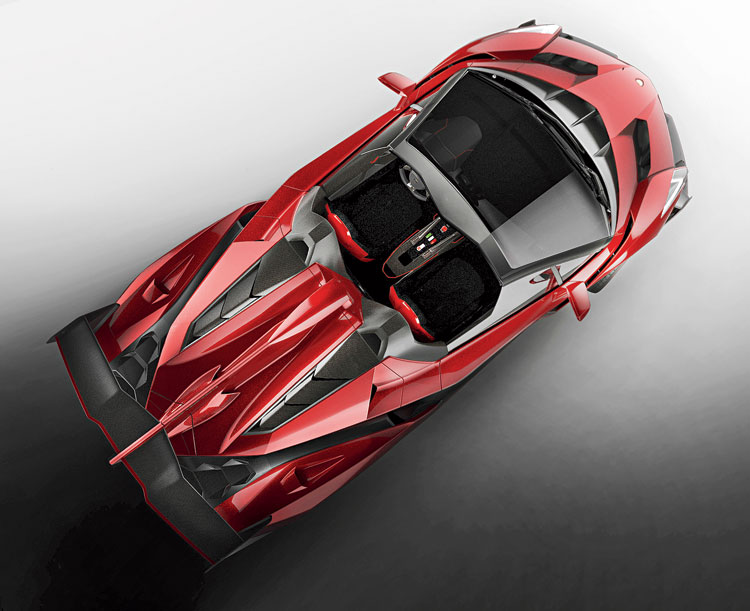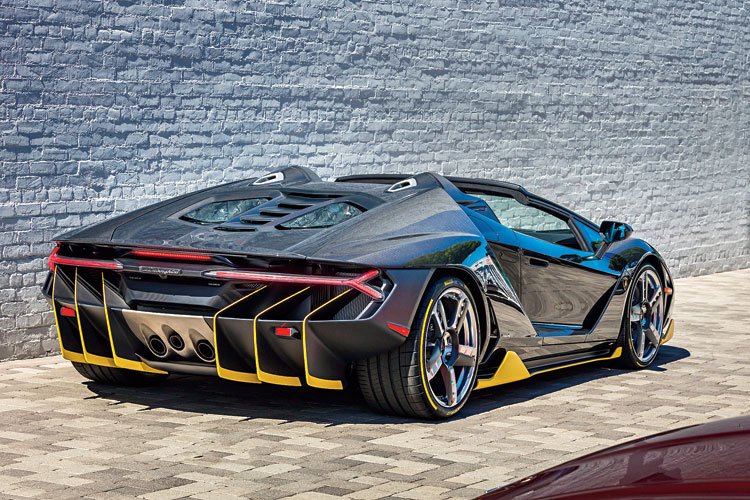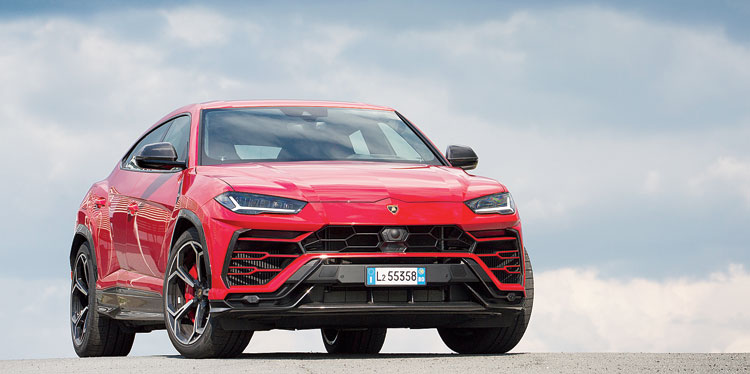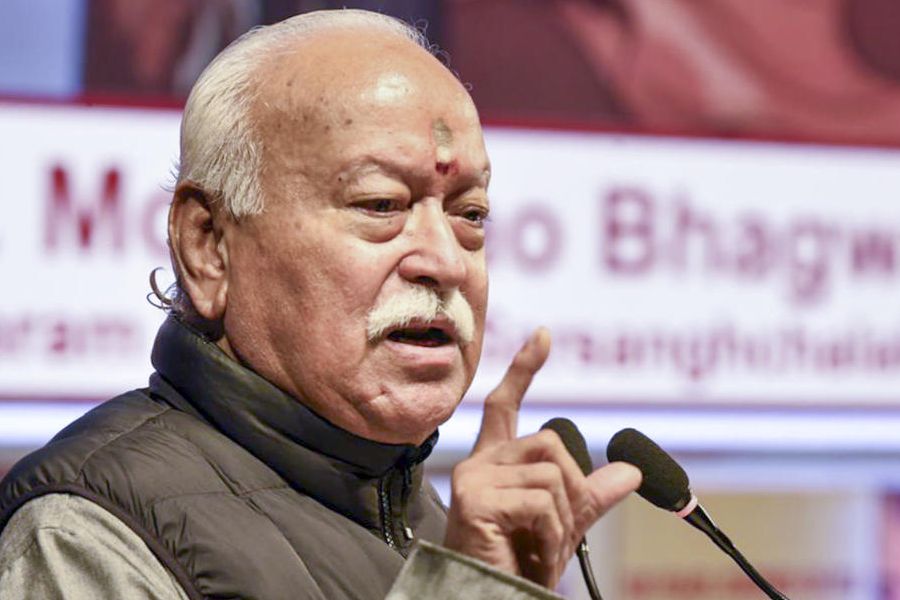Supercar maker Lamborghini is on a roll and 2018 has been a landmark of sorts for the brand. Not only did it launch the Urus, its first SUV in 25 years and the second one ever, it also grew sales volumes by a whopping 51 per cent — a rarity for any auto company. Earlier that year, in January, it also unveiled the first electric concept car with the fighting bull logo on its nose, aptly called Terzo Millennio, or Third Millennium, to demonstrate the direction that the manufacturer is trying to go with electric car technology.
Lamborghini chairman and chief executive officer Stefano Domenicali gave The Telegraph the low-down, when we met him at the Cartier Travel With Style Concours d’Elegance 2019 in Jaipur.
Zooming ahead
“Last year the company sold 5,700 cars globally and the year before it was 3,800. This year it is hoping to take the figure up to 8,000 cars. So it’s a big step in terms of growth,” he says. “Of course, half of that is connected to the new project, that is Urus, the superSUV that has given the boost to enter in a new segment and to catch new customers that were not part of the Lamborghini family before.”
If sales grow as fast as it expects, Lamborghini would substantially narrow Ferrari’s lead — that company sold 9,251 cars in 2018 but grew slower at 10.2 per cent — over it. Ferrari, however, remains the supercar company that sells the maximum number of vehicles.
Lamborghini’s job, says Domenicali, “is to keep working on stabilising this growth that has been exceptional — both in terms of volume and awareness (of the brand).”
He says that younger and younger customers are approaching the brand because it is perceived to be very aspirational, very unique. “And, therefore, the more we speak about the mobility of the young, the more you see the value of being different from the other brands. That is one of the reasons for the success of Lamborghini today.”
The company’s traditional products are pulling in the younger buyers. Says the CEO: “Our average age of the customer for super-sports cars is between 30 and 45, of course depending on the region of the world.”
He adds that the brand is perceived as very, very sporty and very young; a Lamborghini is seen as the car to own even by achievers. That is the image that the company has very clearly pushed during the last couple of years. The company’s biggest growth markets today include the US, the UK, Australia, Canada and Japan. India’s good too. Everywhere it has grown very dramatically. The sales volumes have doubled in less than two years.
The driving force
Domenicali says: “Our success is showing that there is still room to be different. No doubt we need to look carefully at the emissions and the legislation mainly, but that is something that is connected to our complete strategy and portfolio. What is clear, for example, is that the future of the 12-cylinder (engine) is still there. And for the next decade, for Lamborghini, the 12-cylinder will still be there. It will be associated with hybridisation, that is a different story, but the V12 will always be there because that is one of the beauties of our brand. And if you speak with our customers, they want to stay (with Lamborghini) because of that.”
But other powertrains — V10s and V8s — are there in the portfolio as well. “We already have the V8 in the Urus and that engine will be hybridised in the future. And we are discussing internally what will be the right solution for the hybridisation of the Huracan, that is the V10. So far we have been very different in terms of engine displacement. For sure our plan for the future is to be different in a hybrid world because that’s the trend that we need to follow if we want to respect the homologation limits.”
Product range
SuperSUV Urus is the only vehicle in the company’s portfolio now that has more than two doors or seats more than two people. And it is likely to remain that way in the short term, says Domenicali. He adds: “So far, we have a stable portfolio of Aventador and its variants, Huracan and Urus. I don’t think we are going to change the portfolio till about 2024-25. We need to stabilise our growth first. After that, for sure we are watching and discussing what could be the right fourth model for Lamborghini — whether it is a GT 2+2 or four-doors, the discussion is on the table. We don’t have to rush.”
Balancing exclusivity and growth
“We do believe that today, with the same markets — maybe if there were more markets the volumes would be higher — what we are going to achieve this year would be around 8,000 cars. That should be the balance that you are talking about. Because we see that the residual values are super high. We are going to offer fewer cars than what is the request. That is the approach that we want to keep.”
On the ability of Lamborghini cars to hold value, Domenicali says: “What we are talking about is the market for one-offs, or hypercars, or limited editions. The point is to understand what are the numbers. For example, Lamborghini had the Sesto Elemento and the Centenario or Veneno. These kind of cars were representing a unique offering. Veneno was three plus nine (three coupes and nine roadsters), Centenario was 40 — 20 coupes and 20 roadsters. Therefore a very selected number. We were sold out in the blink of an eye. And the value for them is very, very high.” He intends to keep “adjusting the numbers without pushing too much because then the value would be lower”.
In the group, but different
As part of the Volkswagen group, Lamborghini does share technologies with brands like Audi (it’s owned by Audi) and Porsche. So there are similarities between the Urus and the Porsche Cayenne, for instance, and the Huracan and the Audi R8 V10. Nonetheless, Lamborghini has managed to retain a different identity for itself.
Domenicali says his customers want to be seen as different, but, at the same time, Lamborghini has to make the most of being part of the VW group. He explains: “We are lucky that we are part of a very strong group. But the group itself has to leave the liberty or the freedom to the brand to develop its own philosophy. Otherwise, it would be the killer because everybody would be perceived to be one brand within one group. And the beauty of being part of this group is that they have 11 brands, each of them has a different philosophy. Of course, some brands are more connected to volume approach, some other with premium, some other to sports, some other to supersport.”

The Veneno Picture by Lamborghini
He thinks everything about the company he heads differentiates it from the rest of the group companies. “We are the jewel of the group,” he says proudly, “and therefore we need to keep the integrity of the brand, and that, thanks to the group, we were able to achieve.”
The biggest way of differentiating the company from others in the group is it’s Italian identity. Domenicali says: “It (Lamborghini) is totally Italian because it was born in Italy, it is perceived to be Italian.” For the Urus project, there was a lot of debate about moving Lamborghini to a different place, he says, but they took the right step in terms of vision to keep the brand in Italy. We have the Italian flag, we have the ‘Made in Italy’ stamp and the technology is absolutely something that we develop internally....”
That styling is done entirely at the company’s headquarters in Sant’Agata Bolognese in northern Italy. The Centro Stile, or styling centre, is where all those evocative lines are created and the cars developed. While platforms are shared for some models, for others they aren’t. “The Aventador is a total car designed, produced, assembled and done only in Sant’Agata,” says Domenicali.

The Centenario Picture by Lamborghini
Model cycle
Lamborghini typically follows a long model cycle, of about eight-10 years. But the market and technology are changing quickly now. So would we see new models from the company more frequently?
“I can answer to you with one result,” says Domenicali. “The Aventador was launched in 2011. And no one would have thought that the model would have this success. The model was launched with a life cycle of 10 years thinking that we would sell 5,000 cars globally. We are today already at 8,000 units and even more are being produced. Therefore, what we see in the future is to be stable on that respect.”
He does acknowledge, however, that the company might have to react faster in future and do things differently: “So the life cycle of a car may be a little bit shorter. But if you think about the investment that is needed to do another car, shorter than that I would say would be very difficult to recover the investments, not only for Lamborghini but for all the brands in the world.”
The spirit of racing
Before he took over as the head of Lamborghini, Domenicali was the principal of the Ferrari Formula 1 team. How does that experience help him in his current job?
“Managing a racing team is very similar to a lot of the things I am doing today in terms of management skills. Of course, the results and the activities are different, but in terms of preparation and managing things they are more or less similar. The thing that I would say was important on my side on this fantastic journey with Lamborghini was the need for speed. It is something that we need to have also in the super-sport car world or in the industry world of the cars. Normally, you know, in the car business there is the problem of not respecting the time so much. In racing, if you don’t start the race on time once the green flag is given, then you have a problem. Therefore, this kind of mentality, I think, was important for me to share with the people that I am working with today.”











